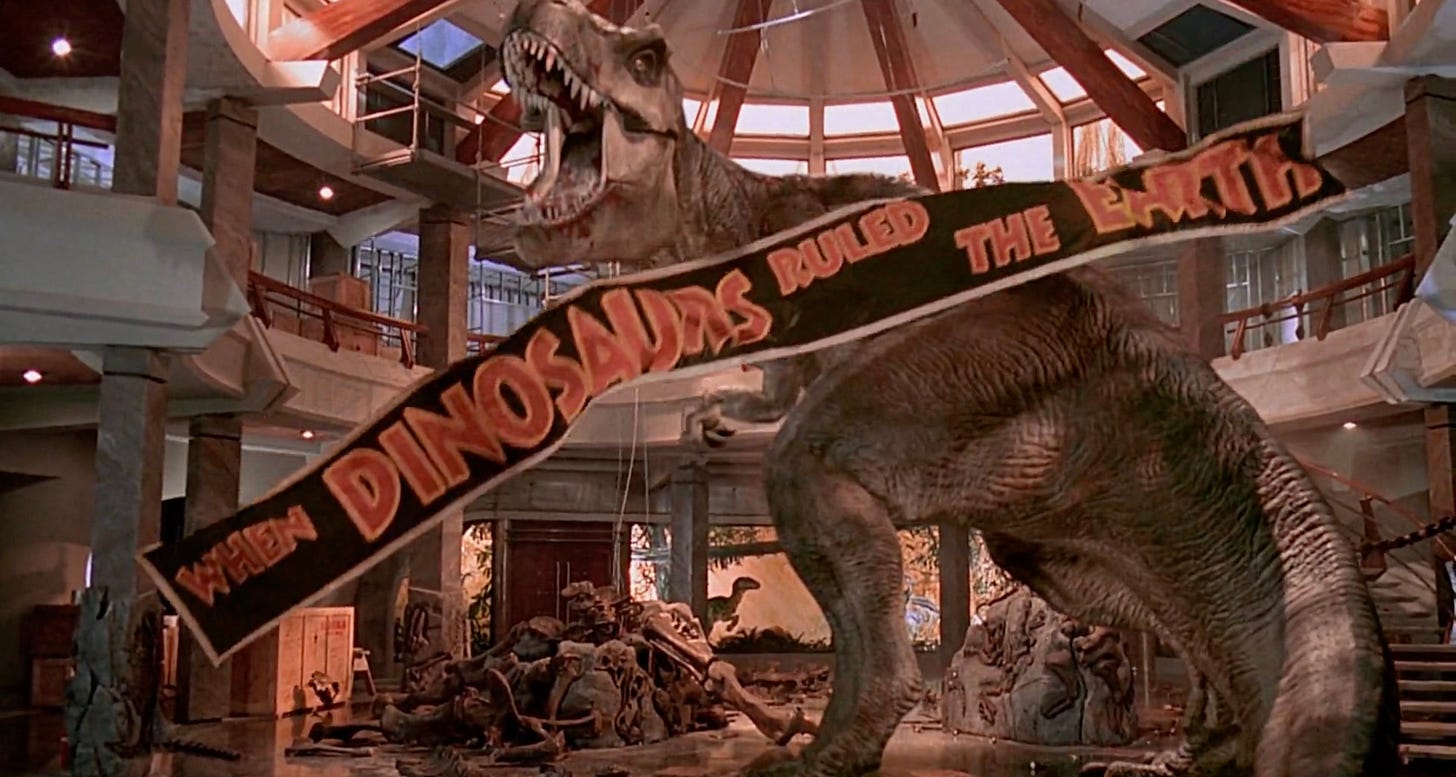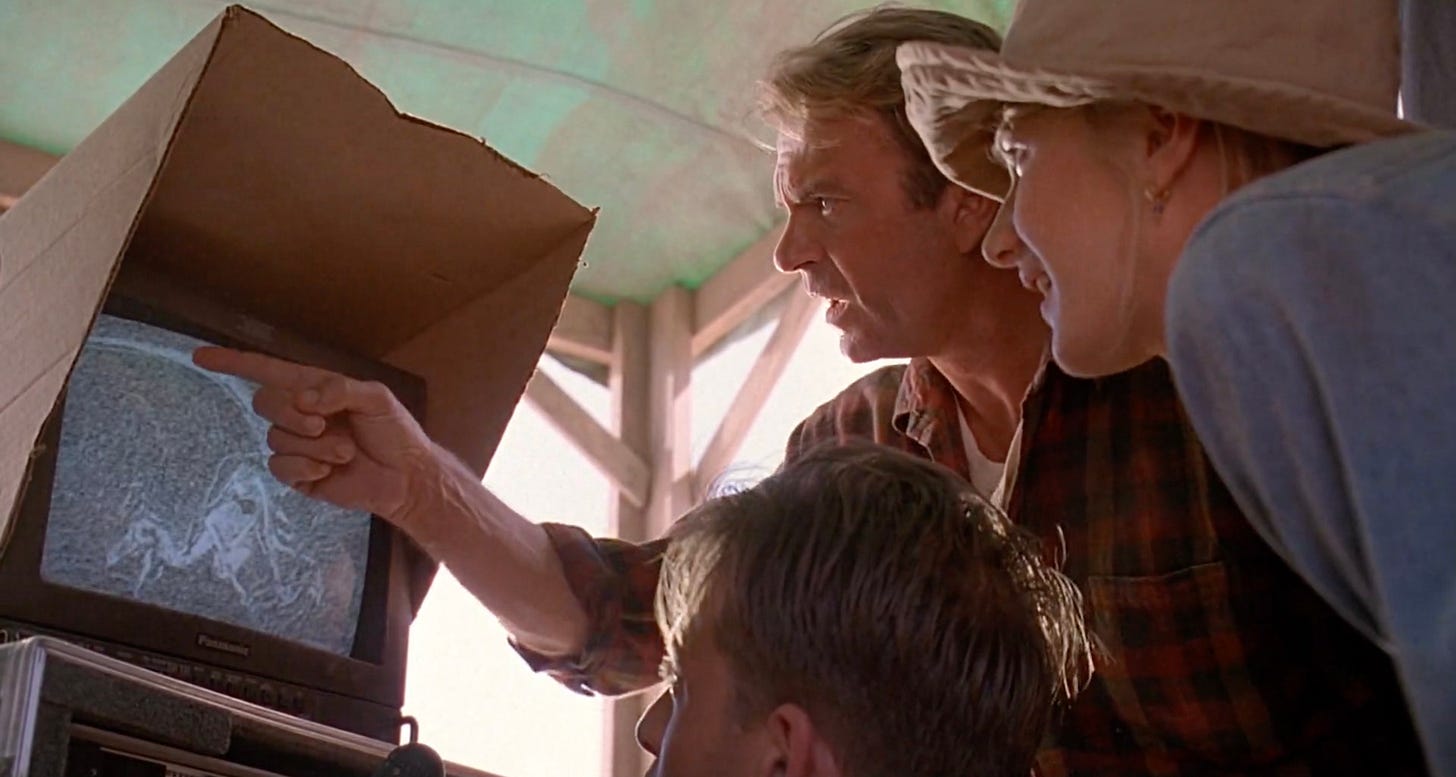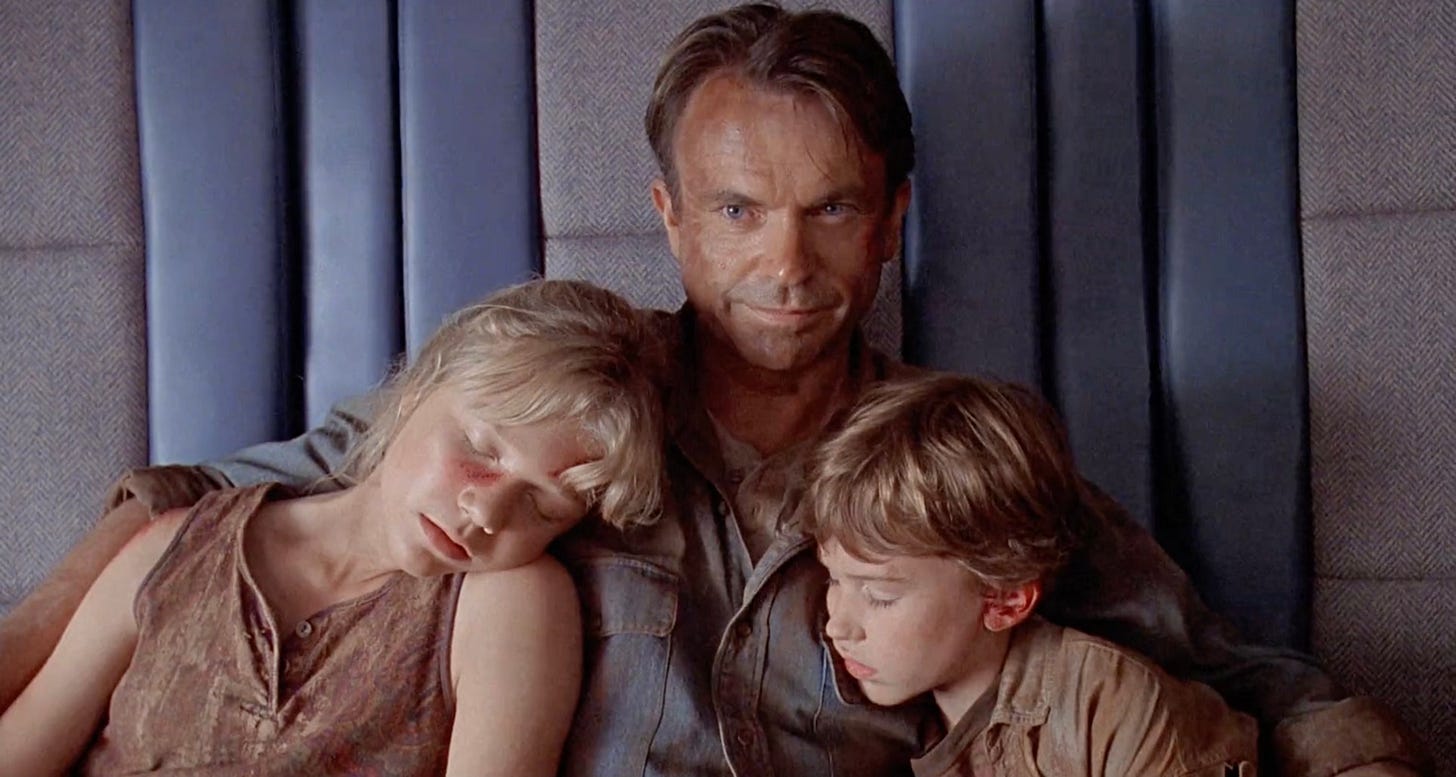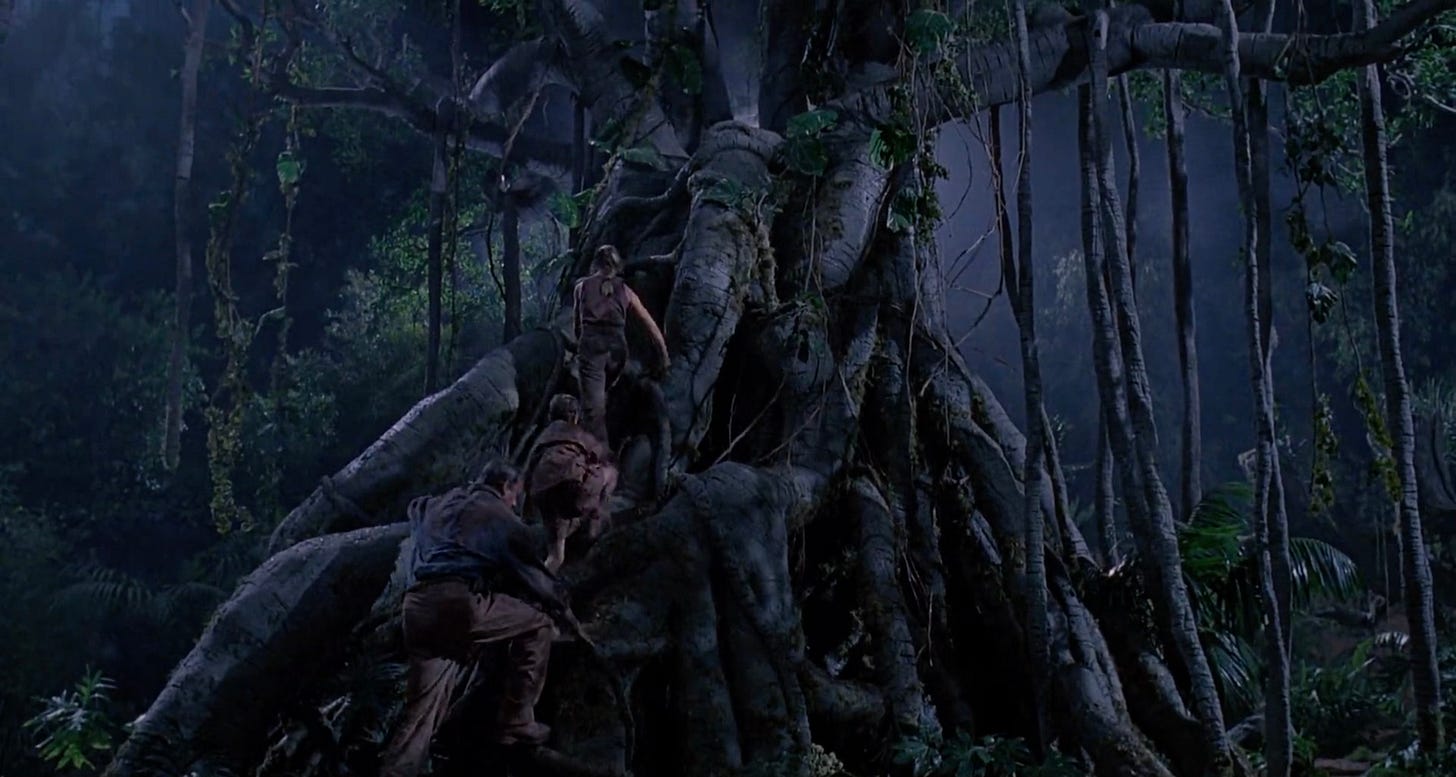My Experience with Jurassic Park
Yesterday and today I’ve been revisiting Steven Spielberg’s 1993 blockbuster Jurassic Park. It opened in theaters in June 1993 and was released on video in October 1994. I was born in 1991 and didn’t see it in the theater at the time but I did watch it hundreds of times on VHS in the years that followed.
It’s probably been more than ten years since I’ve watched it, though, and returning to it has been an intense experience on three different levels:
I’m seeing how it captivated me as a kid even if I didn’t fully understand the nuances of the story. It works for kids in its depictions of dinosaurs, vehicles (those Jeep Wrangler YJs! those electric Ford Explorers!), guns, and violence.
I’m seeing that it’s a remarkably well-done movie. It works for adults in its compelling storytelling and its pathbreaking use of practical and visual effects to depict believable dinosaurs.
I’m recognizing how indelibly it shaped my lifelong interests in animals, vehicles, and science and technology, and how it inspired a deep reverence for American capitalism and its capacity for miracles, good and bad.
I plan to dig up reviews and analyses of the movie in the next several days, and probably write about those, but before I do I want to take some notes here.
Preliminary Notes from the Movie
My goal with these notes isn’t a comprehensive review or synopsis of the movie, mostly they’re slightly polished impressions.
I’m assuming you’ve seen the movie. If you haven’t seen the movie, or you haven’t seen it in a long time, you should watch it before reading these notes.
It’s about natural origins and innate impulses.
An early scene has paleontologist Dr. Alan Grant gesturing at a remotely imaged Velociraptor skeleton, remarking “no wonder these guys learned how to fly,” prompting laughter. The theory that dinosaurs “evolved into” birds, which gained credibility from the 1960s to the 1990s, is now widely accepted though I’ll note that the consensus is now that birds are themselves a branch of theropod dinosaurs, not merely originating from them.
This scene also features Grant’s first interaction with a child:
Kid: That doesn’t look very scary. More like a six foot turkey. (adults laugh)
Grant: A turkey, huh? Okay. Try to imagine yourself in the Cretaceous period. You get your first look at this “six foot turkey” as you enter a clearing.
He moves like a bird, lightly bobbing his head, and you keep still because you think that maybe his visual acuity is based on movement, like a T. rex, and he’ll lose you if you don't move. But no, not Velociraptor.
You stare at him and he just stares right back. And that's when the attack comes not from the front, but from the side, (gestures) from the other two raptors you didn’t even know were there. Because Velociraptor’s a pack hunter, you see. He uses coordinated attack patterns, and he is out in force today.
And he slashes at you with this: a six-inch, retractable claw, like a razor, on the middle toe. He doesn’t bother to bite your jugular like a lion, see? No, no. He slashes at you here (pretend-slashes torso). Or here (pretend-slashes groin). Or maybe across the belly, spilling your intestines.
The point is: you are alive when they start to eat you.
So, you know, try to show a little respect.




Moments later, Grant’s work partner and love interest, paleobotanist Dr. Ellie Sattler, questions Grant’s attitudes towards children as they’re leaving the dig:
Grant: Yeah, I know. Kids. You want to have one of those?
Sattler: I don’t want that kid, but a breed of child, Dr. Grant, could be intriguing. I mean, what’s so wrong with kids?
Grant: Oh Ellie. Look, they’re noisy, they’re messy, they’re expensive.
Sattler: (quietly) Cheap, cheap…
Grant: They smell.
Sattler: They do not smell!
Grant: Some of them smell! Babies smell.
This scene, which introduces us to Grant and Sattler, establishes Grant’s hostility towards children and Sattler’s desire to have them with Grant.
It forms a link, the first of many, with the movie’s final scene in which Grant literally embraces two children as he exchanges a knowing glance with Sattler.
Grant’s attitude towards children evolves as he’s forced to tolerate and then protect the two grandchildren of the park’s owner, John Hammond.
Watching Grant and the two children seek shelter in a tree in the aftermath of an attack from the park’s escaped Tyrannosaurus the theme clicked for me.
Our hominid ancestors sheltered in trees. Grant’s decision to return to a tree with the children symbolizes human origins and the innate child-rearing instinct. Throughout the movie that’s one of the uncontrollable natural processes we’re watching unfold: Dr. Alan Grant “devolves” from a scientist who dislikes children into a human male who comforts, protects, and if we’re to believe the final scene, desires them.
This theme of “returning to the trees,” of reversion to innate survival instincts, has immediately changed how I think of this movie. It’s a remarkable feeling to have this childhood memory, which hasn’t changed for decades, changed.
It’s about the subjugation of nature.
There’s so much to think about and write with this theme that I think I’ll have to return to this. See also: King Kong.
It’s about exceeding boundaries and hubris.
Same as with the previous theme, I’ll need to return to this. See also: Prometheus.
It’s about miracles: natural and human.
Let’s return to the final scene. The survivors have boarded a helicopter from the doomed park bound for the safety of the Costa Rican mainland. As they fly low over the water Sattler looks out the window and Grant follows her gaze. They intently watch a group of pelicans cruising low over the water. There’s a cut to a single pelican. Then there’s a cut to the helicopter. The credits roll.




This scene, like Grant and Sattler’s first scene, takes up the bird and children motifs again. We admire the pelicans and the miracle of avian flight. Closely following with an image of the survivors in the helicopter we’re meant to connect this feeling to the miracles humans are capable of, be it powered flight or genetic engineering.
What’s Next
I plan on rewatching the movie, rereading the book, reading reviews, and learning more about how the movie was made. I’ll probably watch the movie’s sequel, too, since it was directed by Spielberg and based on the book’s sequel.
I’d also like to understand Michael Crichton’s research process better.
More analysis to follow.





